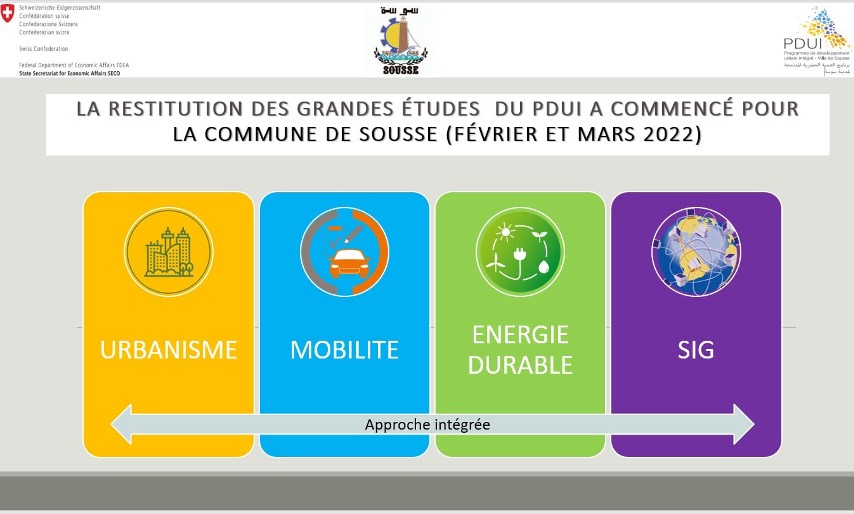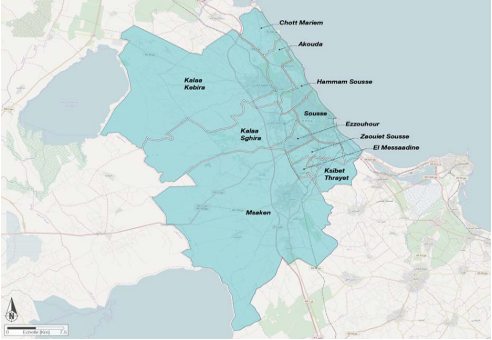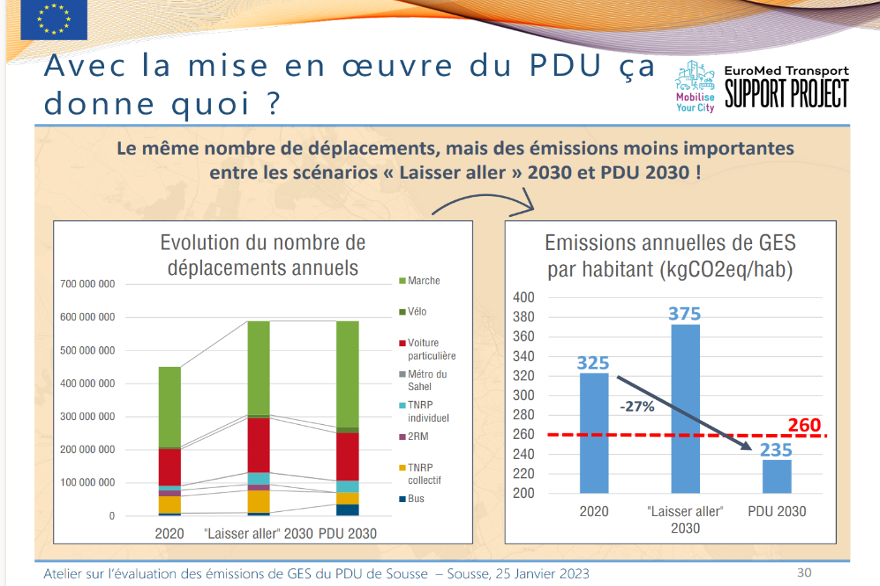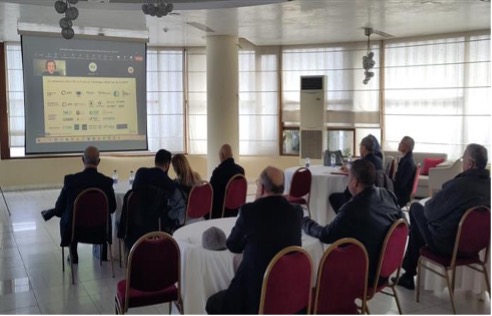
Close

Approach Words: Integrated City, Sustainability, Urban Livability
Public Policy Instruments: Physical Intervention, Planning
The Sustainable Urban Mobility Plan (SUMP) serves as the strategic framework for transforming mobility in Greater Sousse, Tunisia.1 As a key pillar of the Integrated Urban Development Programme (IUDP) of Greater Sousse,i 2 the initiative is led by the State Secretariat for Economic Affairs (SECO) of the Swiss Confederation, in collaboration with the municipality of Sousse.3
Rapid urban expansion on the outskirts of Sousse, following a radio-concentric model, has led to increasing reliance on motorized commuter flows.4 In response, SUMP envisions Sousse as a “Metropolis of Proximities” by 2030,5 shifting the city’s mobility model; from hyper-mobility to hyper-proximity, and from a “laissez-faire” approach to a structured and sustainable urban mobility strategy.6

Title: Diagram showing the four main components of the Integrated Urban Development Programme including the Mobility Component
Source: Click Here

Title: Map Showing the Study Area
Source: Click Here

Title: Graph comparing the climate impact before and after the implementation of the Sustainable Urban Mobility Plan (SUMP).
Source: Click Here

Title: Workshop on Assessing the Climate Impact of the Implementation of the Greater Sousse Urban Mobility Plan
Source: Click Here
At the core of this transformation is the pedestrian, often the most vulnerable in Sousse’s traffic-dominated streets. The plan prioritizes:
Inspired by the “15-minute city” concept, the strategy aims to replace Sousse’s core-periphery model—where the city center dominates and surrounding communes are secondary—with a polycentric urban structure. Under this vision, each district functions as a self-sufficient hub, providing residents with essential services nearby, and efficient links that connect neighborhoods without forcing reliance on the city center.10
The reorganization of intra-metropolitan mobility focuses on two primary objectives:11
(1) Reducing travel distances to minimize congestion and commuting times
(2) Decreasing car dependency by strengthening active and public transport networks.
To achieve this, the plan prioritizes:12

Owner/Developer (Public)

Consultant/Designer

Contractor/Implementer
The planning process embraces a participatory and communicative approach, engaging both civil society and public actors through listening and reflection workshops, organized by the Municipality of Sousse.13 14
The project is initiated by the Municipality of Sousse,15 in collaboration with the Ministry of Local Affairs and Environment (MALE) and other municipalities within the agglomeration.16 17 Funded by the State Secretariat for Economic Affairs of the Swiss Confederation (SECO),18 with TRANSITEC overseeing the strategy’s development.19
Project Link
Endnotes
References